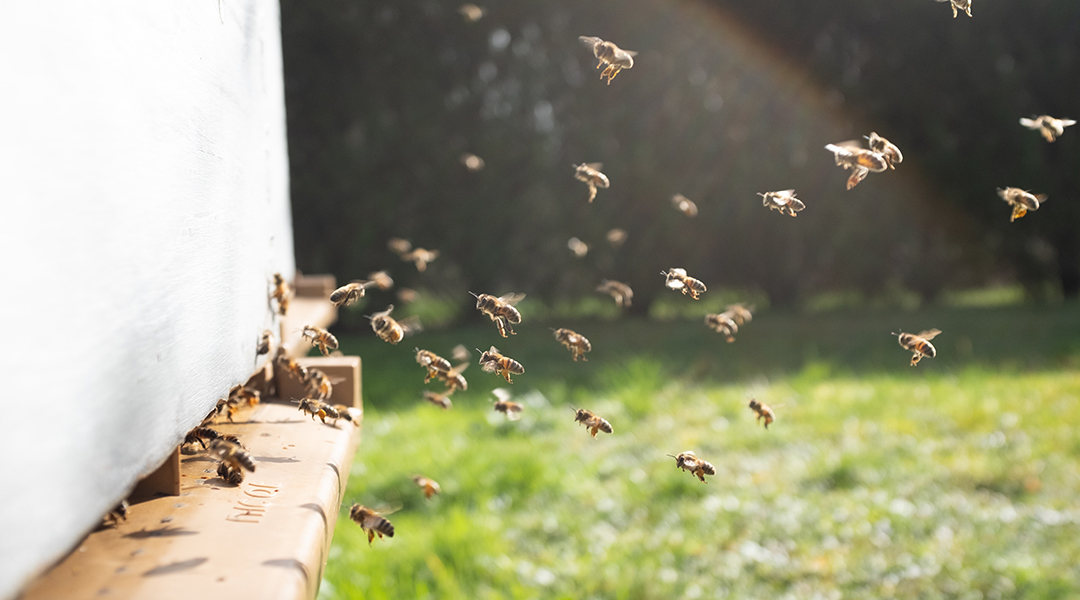Scientists have known for several years that we live in “microbial clouds”. The trillions of microbes that our bodies host in and around them vary enough from person to person that they can be used to identify us. But a new study finds that cities are just as full of microbes which reveal information relevant to their populations’ health. The analyses are performed thanks to some unlikely collaborators: bees.
“There is no space that is devoid of microbes,” said Elizabeth Hénaff, researcher at the NYU Tandon School of Engineering and lead author of the study. Just like a person’s microbial cloud encodes plenty of information about their eating habits, age, or health, Hénaff and her team wondered whether the collection of microbes (known as the microbiome) could also vary significantly between cities or even neighborhoods, and what other information it might hold.
Sampling enough locations in a city to get a fair representation of its microbes is a formidable task if done by hand. However, the researchers realized that honeybees forage for food around their hive, within a two-mile radius in the case of urban environments – approximately the scale of a neighborhood. During foraging, the scientists thought, the bees surely picked up a lot of the microbes present in the air they fly through.
On lockdown
The team started out in New York and sampled a range of materials from three hives. They quickly realized that the inside of the hives, the honey, and the propolis was extremely similar across all three at a microbial level. “Bees have the internal hive microbiome on lockdown,” Hénaff said. Considering honey and propolis have well-known antimicrobial properties, the results were not all that surprising.
But they also sampled the debris left at the bottom of the hive and found drastically more diverse genetic information in its microbes. The debris turned out to be where the bees leave all of the microbes that they picked up during their foraging trip and want to clean off, and thus a reliable indicator of the neighborhood’s microbiome.
“One way to imagine what we’re dealing with is, when bees get home they wipe their feet on the mat, and [the debris] is everything you’d find on the mat,” said Kevin Slavin, researcher at the MIT Media Lab and senior author of the study.
A world tour
Encouraged by the diversity across the three New York sites, the researchers embarked on a world tour of honeybee hives in search of more debris samples. They analyzed material from Sydney and Melbourne (Australia), Venice (Italy), and four areas in Tokyo (Japan) and found unique genetic signatures of each city and even neighborhood.
“Is it possible to know where we are from a biological perspective?” Slavin asked, and this study suggests it is. The microbiome found at the hive in Venice contained fungi related to wood rot, which is not uncommon in the city’s buildings whose wooden foundations are submerged. In contrast, Tokyo’s microbiome contained a fermenting yeast, lotus, and wild soybean.
These features are clearly connected to the cities’ culture and history, and thus constitute “a puzzle piece that we didn’t even know existed but that fits into our general understanding of these cities,” said Hénaff.
A matter of public health
The microbiomes of the hives also contain relevant information about the health of both the hives and the cities they live in. Known pathogens for bees and humans were identified in some samples. While existing surveillance methods, such as sewage monitoring, are still more effective than sampling bee hives, these results show that working with companion species like bees might provide complementary ways to detect potential human diseases early on.
But perhaps the most interesting upshot of this study is to do with environmental justice. It is becoming increasingly apparent that exposure to diverse microbiomes is a key component for positive health outcomes while lack of access to such diversity has the opposite effect, Hénaff explained. This means that our cities’ microbiomes are a matter of public health.
This is why the team plans to characterize the diversity metrics of the microbiomes of different neighborhoods in order to assess their potential impact on the population’s health. The results could then be used in city planning – a movement which Slavin calls “probiotic urbanism.”
“I think there is a near- to medium-term future in which understanding microbial environments becomes a crucial point of reference in thinking about environmental justice,” he said.
Reference: Elizabeth Hénaff et al., Holobiont Urbanism: sampling urban beehives reveals cities’ metagenomes, Environmental Microbiome (2023). DOI: 10.1186/s40793-023-00467-z
Feature image credit: Damien TUPINIER on Unsplash

















